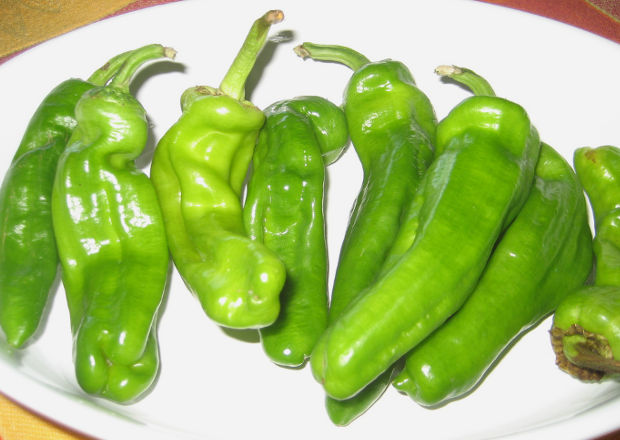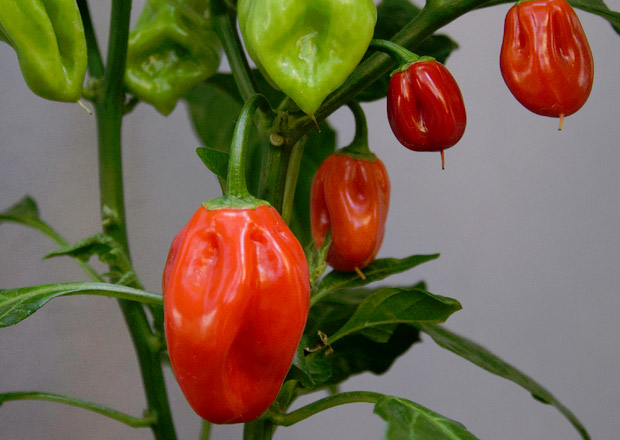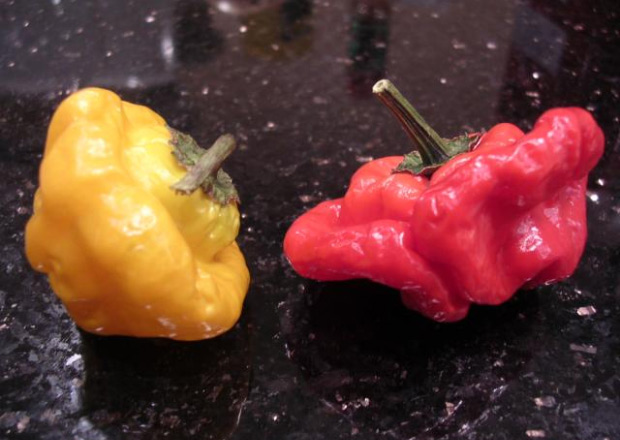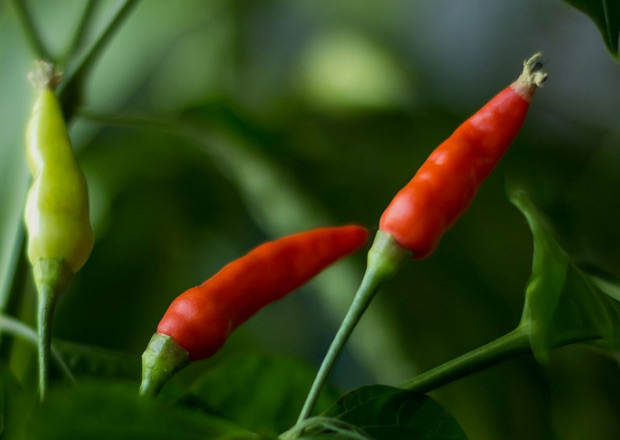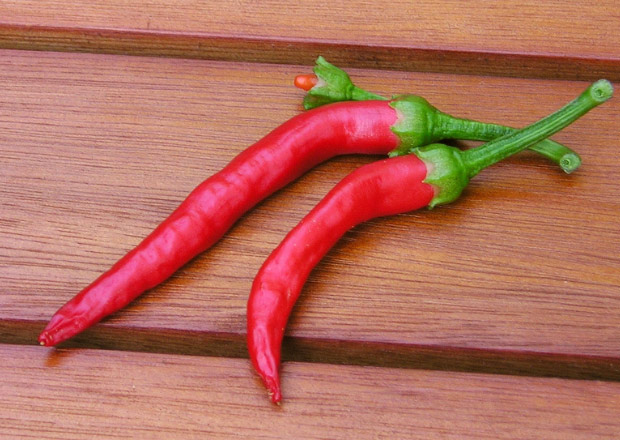The Hottest Peppers in the World
The chilli (or "chile") pepper is a seed-bearing fruit, bringing heat to the tastes of us mammals with the chemical compound capsaicin. The ghost chilli is probably the most well-known of the more intense cultivars. A few new varieties have appeared in the 2000s, reaching new heights through breeding and selection. While some have been grown with heat or a Guinness World Record in mind, others were created or found by accident. The peppers below are measured in Scoville Heat Units (SHU):
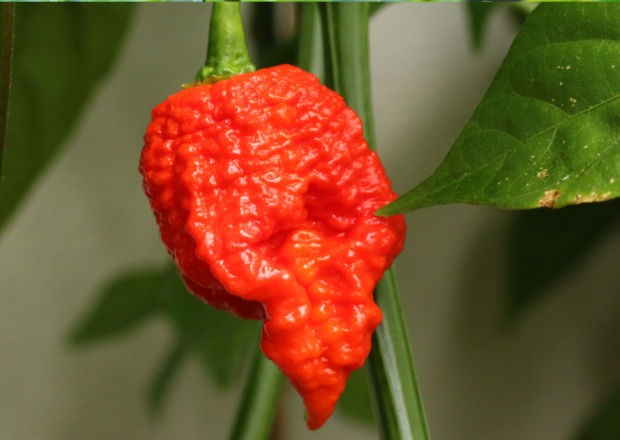
#1: Carolina Reaper
1,569,300–2,200,000[1] SHU
Record Set: August 7th, 2013

#2: Trinidad Moruga Scorpion
580,000–2,009,231[2] SHU
Record Set: February 13th, 2012

#3: Chocolate 7-Pot 'Douglah'
924,000–1,853,396[2] SHU
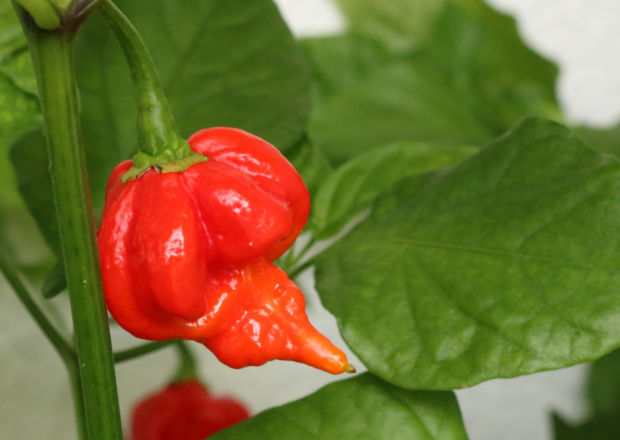
#4: Trinidad Scorpion 'Butch T.'
800,000–1,463,700[2] SHU
Record Set: March 2011
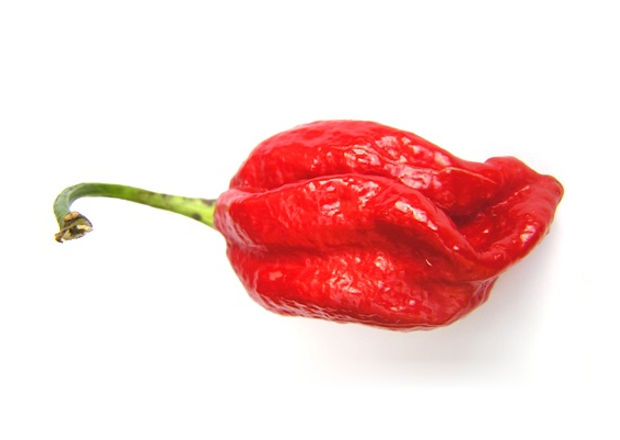
#5: Naga Viper
1,382,118[3] SHU
Record Set: February 25th, 2011
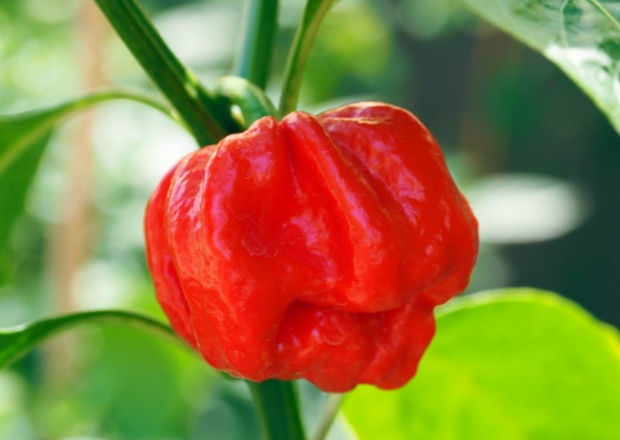
#6: The 7-Pot 'Barrackpore', 'Jonah', and 'Primo'
~1,000,000–1,300,000[4] SHU
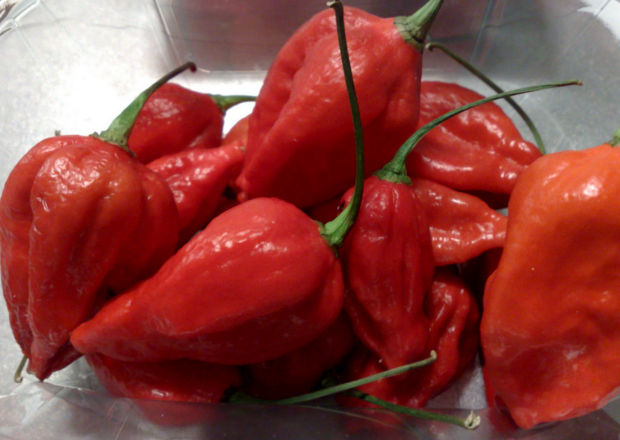
Dorset Naga Variety of Naga Morich
661,451–1,032,310[4] SHU
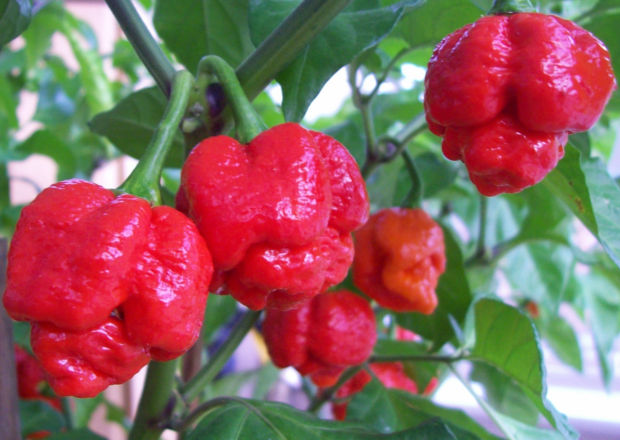
Infinity Chilli
1,067,286[3] SHU
Record Set: Early February, 2011
Very Hot Chiles: Under 1 Million SHU
There are dozens of other varieties of peppers that make their way into many dishes, powders, and hot sauces. Many of these chillis are more than hot enough, or still too hot for many people. A spoonful of your average hot sauce made with habanero is often enough to spice up a meal. Around this level of heat is the sweet spot for a lot of spicy products that still want their flavor and other ingredients to be perceptible.
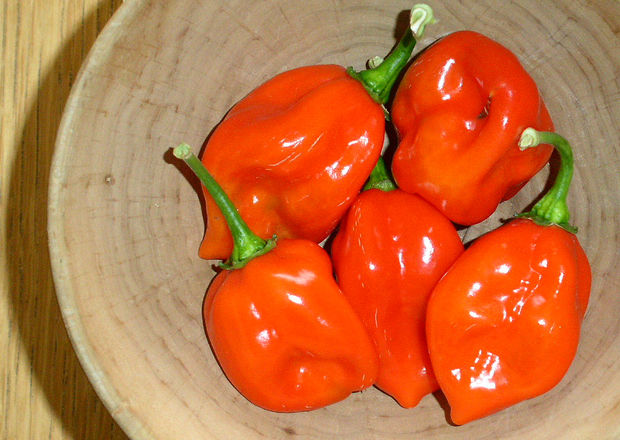
Red Savina
250,000–577,000 SHU
World Record: 1994–February 2007
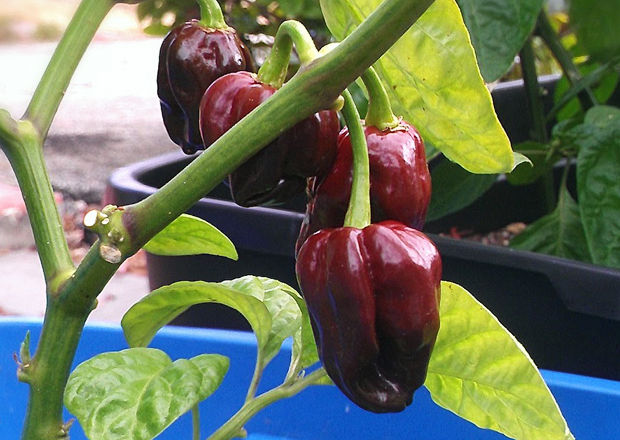
Chocolate Habanero
100,000–350,000[3] SHU
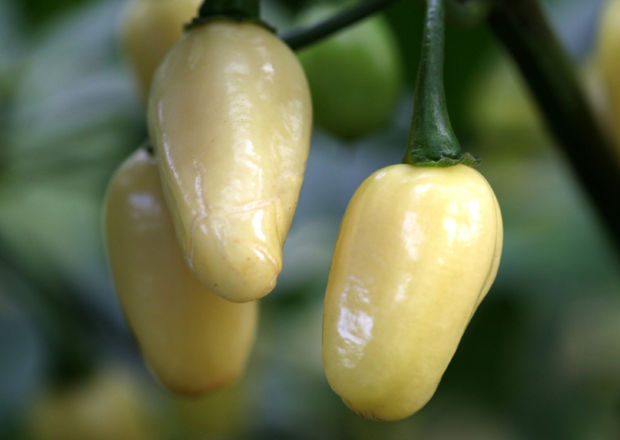
Peruvian White Habanero
100,000–350,000[3] SHU
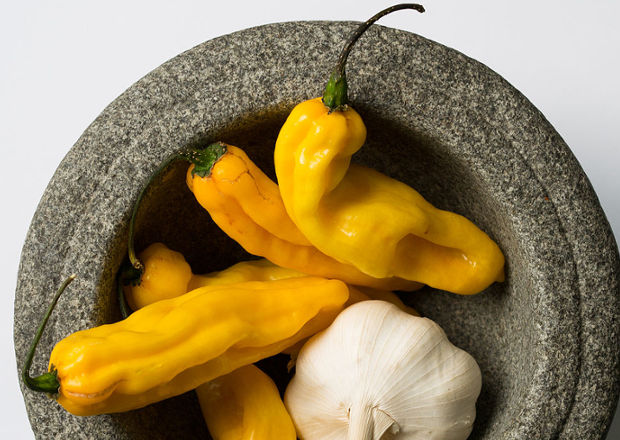
Madame Jeanette Chilli
100,000–350,000[3] SHU

Fatalii
125,000–325,000[3] SHU

Devil’s Tongue
125,000–325,000 SHU
Hot to Medium Hot
Just because these chilli peppers do register in the million plus range of Scoville heat units, does not mean that taking a bite out of one freshly picked from a garden is a good idea. You still may find yourself running to find a glass of milk to ease the burning sensation. These range from about 3 to 15 times as hot as a jalapeno.
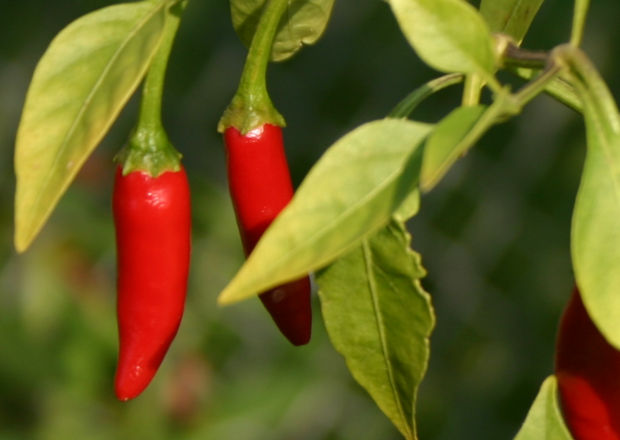
Thai (Bird's Eye)
100,000–225,000[3] SHU
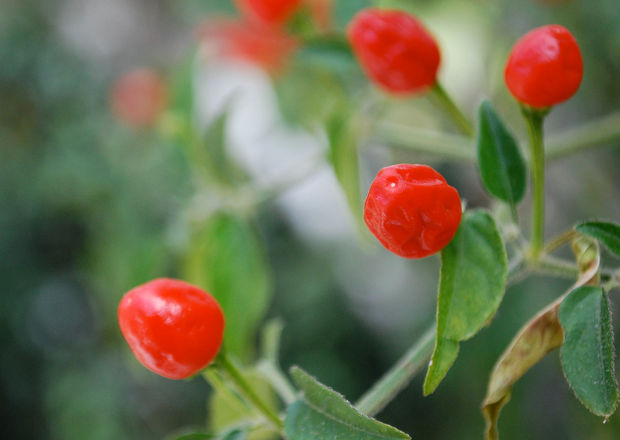
Chiltepin
50,000–100,000[3] SHU
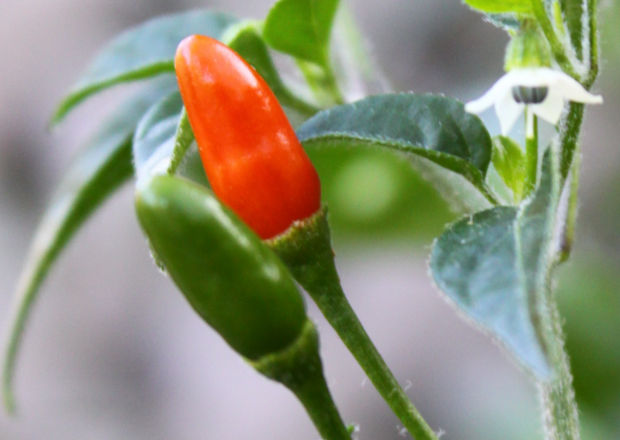
Pequin
30,000–60,000[3] SHU
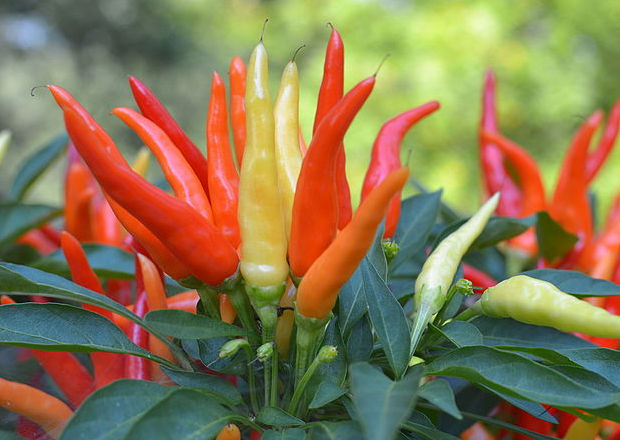
Tabasco
30,000–50,000[3] SHU

Serrano
10,000–25,000[3] SHU
Mild: The Lower End of the Scale
The heat level can vary greatly depending on where the chilli comes from—the chile peppers from your average supermarket may be exceptionally mild. While the ones from a farmer's market could be 10 times hotter than you were expecting. Here are some of the more well known types of "hot" peppers residing at the lower part of the scoville scale. There are a lot more—they just don't get as much attention with the race to the top and without their own niche.
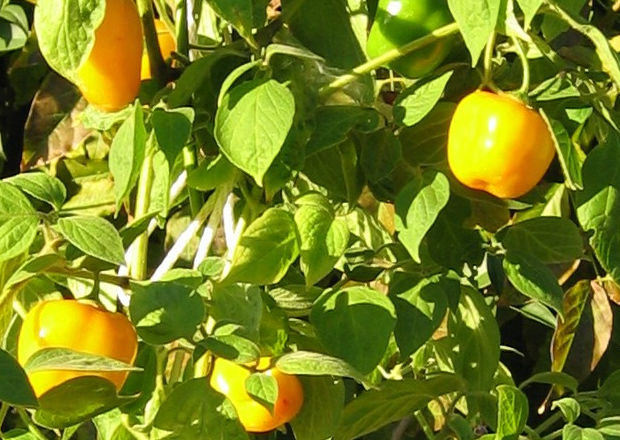
Manzano
12,000–30,000[4] SHU

Poblano
1000–1500[3] SHU
